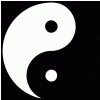
Yin and Yang in Your Home
By Feng Shui Concepts|January 11, 2010
It was wonderful to see the Yin and Yang symbol, representing unity, on the Harbour Bridge as part of Sydney’s 2009 New Years’ Eve celebrations.
Yin and Yang is fundamental in Chinese philosophy, and a primary guideline for Traditional Chinese medicine, Feng Shui and other modalities in Chinese Metaphysics. Yin and yang represents the duality in nature and how opposite forces are interrelated and give rise to each other.
Yin and Yang is used to describe the energy in our homes, buildings and surroundings. Yin characteristics are dark, still, low, cool, contracting and passive, whereas Yang can be characterized by heat, brightness, action, fast and light.
Yin houses lack vitality, and are often cold and dark. Yin sites do not promote healthy living spaces, and occupants living in an excessively Yin environment may lack energy and motivation. An example of a Yin house could be that of a recluse or loner. Yang houses have more vitality than yin houses and are characterized by occupants engaging in activity.
Examples of houses that would have higher levels of yang would be apartment blocks in sunny areas or houses in busy districts where there are many residents, pets and busier roads. An excessively Yang house is characterized by occupants not being able to sleep or relax.
The objective in Feng Shui is to achieve balance in Yin and Yang by using the five elements of fire, earth, metal, water and wood. A balanced and harmonious home is ideal for your wellbeing, and helps you to create an environment that allows new opportunities to enter your life.
Tips to change the energy levels in your surroundings with Yin and Yang:
Quite often, the good energy for health and relationships is found in an active area (where it is better utilised in the bedroom), and the wealth sector is found in a bathroom, cupboard or otherwise unusable area. This is where the expertise of a Feng Shui consultant comes in, to harmonise the energy in your home and help you make the most of your opportunities in life.
Yin and Yang is fundamental in Chinese philosophy, and a primary guideline for Traditional Chinese medicine, Feng Shui and other modalities in Chinese Metaphysics. Yin and yang represents the duality in nature and how opposite forces are interrelated and give rise to each other.
Yin and Yang is used to describe the energy in our homes, buildings and surroundings. Yin characteristics are dark, still, low, cool, contracting and passive, whereas Yang can be characterized by heat, brightness, action, fast and light.
Yin houses lack vitality, and are often cold and dark. Yin sites do not promote healthy living spaces, and occupants living in an excessively Yin environment may lack energy and motivation. An example of a Yin house could be that of a recluse or loner. Yang houses have more vitality than yin houses and are characterized by occupants engaging in activity.
Examples of houses that would have higher levels of yang would be apartment blocks in sunny areas or houses in busy districts where there are many residents, pets and busier roads. An excessively Yang house is characterized by occupants not being able to sleep or relax.
The objective in Feng Shui is to achieve balance in Yin and Yang by using the five elements of fire, earth, metal, water and wood. A balanced and harmonious home is ideal for your wellbeing, and helps you to create an environment that allows new opportunities to enter your life.
Tips to change the energy levels in your surroundings with Yin and Yang:
- Illuminate excessively dark and gloomy areas of the home with glass, light colours and moving objects. Lighting, mirrors, skylights, electrical equipment and plants raise the energy of a space.
- When renovating, bigger is not always better. Bedrooms are ideally nurturing, supportive and smaller in size. In bedrooms, the Yin aspect should be emphasized and Yang objects are best avoided.
- Yang spaces are more open and active, featuring reflective, harder surfaces for energy to travel faster. This isn’t the objective in bedrooms, where softer, heavier furnishings will help to slow down the energy and promote rest.
- Water features and mirrors activate energy and can enhance the wealth sector in your home. In Feng Shui it’s very important that water features and mirrors are placed in the right locations to avoid stirring unfavourable energy.
Quite often, the good energy for health and relationships is found in an active area (where it is better utilised in the bedroom), and the wealth sector is found in a bathroom, cupboard or otherwise unusable area. This is where the expertise of a Feng Shui consultant comes in, to harmonise the energy in your home and help you make the most of your opportunities in life.
